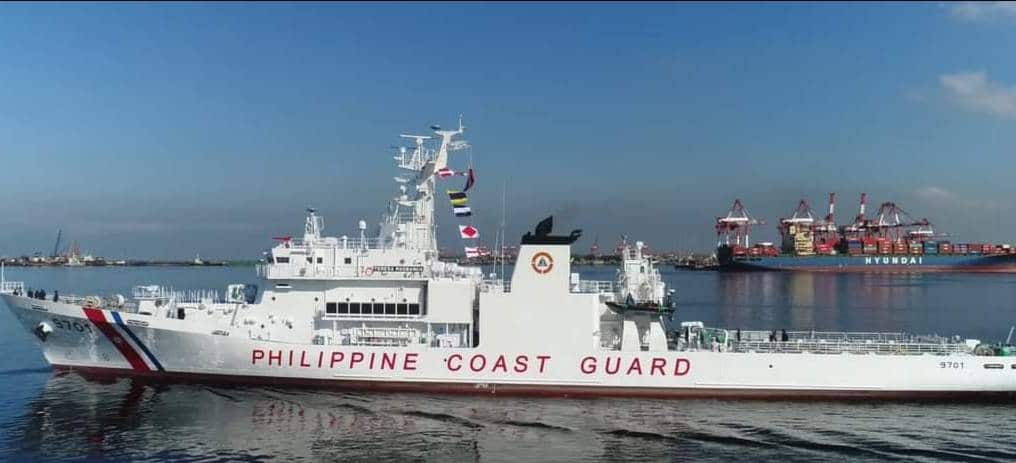Maintaining presence in WPS: PCG sends new ship to Escoda Shoal, thumbs down leasing of foreign vessels

The Philippine Coast Guard (PCG) confirmed Sunday, Sept. 22, that it has deployed a new ship to Escoda (Sabina) Shoal to replace BRP Teresa Magbanua and maintain the country’s presence in the tense maritime feature in the West Philippine Sea (WPS).
PCG spokesperson Rear Adm. Armando Balilo said the particular name of the vessel as well as its location will not be revealed to the public so as not to jeopardize their mission.
“Mayroon na pero ito’y isang operational aspect ng ating pagkilos sa West Philippine Sea (We have [deployed a vessel] but this is an operational aspect of our movements in the West Philippine Sea),” Balilo said in a radio interview over Teleradyo Serbisyo.
Accordingly, PCG Commandant Adm. Ronnie Gil Gavan ordered to keep a low-profile of the deployment.
“Paubaya niyo na lang sa amin ‘yon dahil may bilin si Admiral Gavan na ‘wag nating i-telegraph ang ating mga pagkilos sa West Philippine Sea (Just leave it to us because Admiral Gavan gave a directive to refrain from telegraphing our actions in the West Philippine Sea),” Balilo said.
What’s important, according to the PCG spokesman, is that they will not surrender Escoda Shoal to any foreign power that wants to claim it.
“Mayroon tayong patrol operation sa area at ‘yan ang tinitiyak natin sa mga kababayan natin. Hindi magpapabaya ang coast guard sa pagpapatrol sa area para makita ang presensya natin (We have patrol operation in the area and that’s what we ensure to the public. The coast guard will not let its guard down in patrolling the area to maintain our presence),” Balilo noted.
Meanwhile, Balilo said it will be difficult to lease foreign vessels that will help the Philippines in ensuring a sustained presence in the WPS.
This, as Senator Francis Tolentino reportedly proposed the renting of vessels from other countries to bolster Manila’s position in the disputed areas in the WPS.
“Kung ako po ang tatanungin niyo, personally ang opinyon ko rito ay parang magiging mahirap siya (If you are going to ask me, my personal opinion is that it appears it would be difficult to do this),” Balilo said.
First of all, if the government decides to lease foreign vessels, Balilo explained that ships that pass through pirate-prone areas have very high insurance so it would be an additional cost that will be shouldered by the government.
He also said that if the government rents a private vessel and convert it to a commissioned vessel of the PCG, there is a possibility that it might subjected to similar dangerous and illegal maneuvers by the China Coast Guard (CCG), risking the possibility of damage to the ship and danger to the crew.
“So may banta ng panganib kapag dineploy ito. Baka po banggain din ng China Coast Guard, kung ano po ang ginagawa sa atin, haharangin, dangerous maneuvers (So there is a threat if this is deployed. It might be rammed by the China Coast Guard or whatever is also being done with our vessels, it might be blocked or subjected to dangerous maneuvers),” Balilo said.
Nonetheless, the PCG official said that the proposal is being carefully studied by the National Maritime Council.
BRP Teresa Magbanua left Escoda Shoal on Sept. 14 for repair due to the damage it sustained from repeated ramming by a CCG vessel, unfavorable weather conditions, depleted supplies of daily necessities for the crew, and the need to evacuate personnel requiring medical care.
Relatedly, China has mobilized more Chinese ships to Escoda Shoal over the weekend.
Maritime security analyst Ray Powell said that eight Chinese vessels were deployed from Panganiban (Mischief) Reef to Escoda Shoal, while two more vessels were sent to Ayungin (Second Thomas) Shoal.
A CCG ship was also sent at approximately 40 nautical miles from Palawan, he added.
"What generated this sudden activity is unclear," said Powell, a retired US Air Force colonel and director of SeaLight project at Stanford University's Gordian Knot Center for National Security Innovation which monitors activities in the South China Sea.